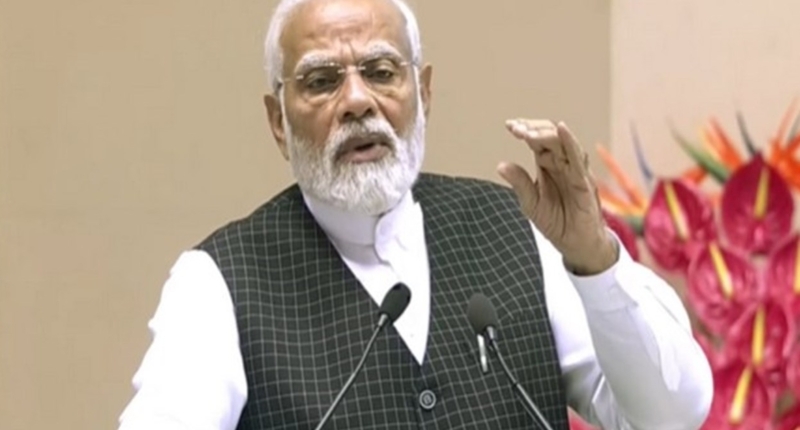India’s Project Tiger has been instrumental in conserving the wild tiger population in India. The project, launched on April 1, 1973, has consistently helped in restoring the tiger population and strengthening conservation efforts for tigers. The initial coverage of Project Tiger included 9 tiger reserves spread over 18,278 sq km which has expanded many folds and today India has 53 tiger reserves covering more than 75,000 sq km of tiger habitat. India harbours more than 70% global wild tiger population with a current population of about 3,000 tigers. India’s success in conserving and doubling its wild tiger population in a span of about 12 years is commendable. A three-day mega event on April 9, 2023, in Mysuru, Karnataka, will celebrate India’s success in tiger conservation globally and garner more political and public support for tiger conservation. The event will showcase India’s success in tiger conservation, and convey India’s commitment to wildlife conservation to the world.
PM Modi to Inaugurate Three-Day Mega Event in Mysuru to Celebrate 50 Years of Project Tiger
According to an official statement, Prime Minister Narendra Modi will be inaugurating a three-day mega event on April 9 in Mysuru, Karnataka, to commemorate 50 years of Project Tiger. The Ministry of Environment, Forest and Climate Change is organizing the event, which will convey India’s commitment to wildlife conservation to the world.
The official said that the proposed event is pertinent as it comes 50 years after the launch of Project Tiger, which will be completing 50 years on April 1, 2023, during the Amritkal, signifying peace, prosperity, development, and conservation in sync with the Prime Minister’s vision of Mission LiFE. The mega event will showcase India’s success in tiger conservation globally and garner more political and public support for tiger conservation.
Apart from the Tiger Census, a commemorative coin release is also proposed during the event. The following releases are proposed during the inaugural session: Declaration of Tiger estimation number, Release of Management Effective Evaluation (2022) of Tiger Reserves and Amrit Kal ka Vision for Tiger conservation, and release of a commemorative coin.
As a national animal, the tiger is historically intricately associated with India’s ethos, art, culture, sculpture, and literature, the release said. The tiger serves as an umbrella species for conserving India’s forest systems ensuring viable populations of other endangered species. It plays a crucial role in maintaining the ecological viability of the entire area, habitat, water, and climate security of the region. However, the species faced enormous threats such as organized poaching for illegal wildlife trade, habitat destruction & fragmentation, and lack of technical and financial support at the field level.
India’s Project Tiger Celebrates 50 Years of Conserving and Doubling Wild Tiger Population
The Indian Government launched Project Tiger on April 1, 1973, to promote the conservation of the tiger in the wild. Since its launch, the project has consistently helped in restoring the tiger population and strengthening conservation efforts for tigers. The project initially covered 9 tiger reserves spread over 18,278 sq km, which has now expanded to 53 tiger reserves covering more than 75,000 sq km (approximately 2.4% of the country’s geographical area) of tiger habitat. These tiger reserves are repositories for biodiversity conservation in the country ensuring regional water security and carbon sequestration, thereby contributing to accomplishing India’s climate change mitigation targets.
India harbors more than 70% global wild tiger population with a current population of about 3,000 tigers, and the population is increasing at an annual rate of 6%. The success of India in conserving and doubling its wild tiger population in a span of about 12 years is commendable, especially when the tiger is highly threatened globally due to the high illegal demand for its body parts.
The remarkable growth of the tiger has been made possible due to an intensive protection regime, science-based management interventions, wildlife health care, the use of state-of-the-art technology in minimizing and preventing human-tiger interface issues, and local community participation through eco-development and conservation initiatives. The significant gains made under Project Tiger have made it one of the most successful conservation projects for large carnivores in the world.
India’s success in tiger conservation will be celebrated at a three-day mega event on April 9, 2023, in Mysuru, Karnataka, to commemorate 50 years of Project Tiger. The event will showcase India’s success in tiger conservation globally and garner more political and public support for tiger conservation.
In conclusion, India’s Project Tiger is a model for tiger conservation worldwide, with the country setting an example for the rest of the world to follow.
Don’t miss interesting posts on Famousbio









